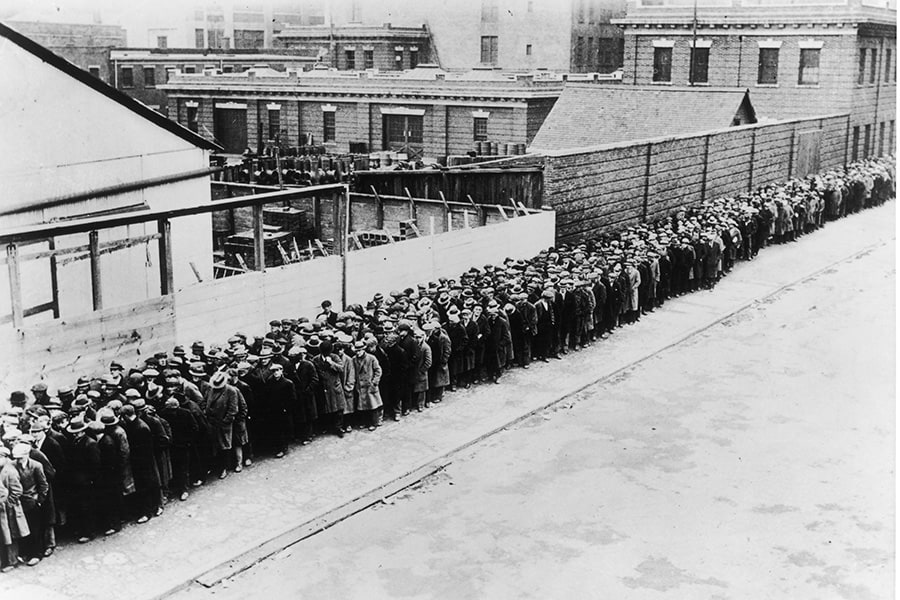
IMF predicts worst downturn since the Great Depression
With countries already hoarding medical supplies and international travel curtailed, the IMF warned that the crisis threatened to reverse decades of gains from globalisation
 A long line of unemployed and homeless men wait outside to get free dinner at the municipal lodging house during the Great Depression, in New York, USA, circa 1930.
A long line of unemployed and homeless men wait outside to get free dinner at the municipal lodging house during the Great Depression, in New York, USA, circa 1930.
Image: FotosearchGetty Images
WASHINGTON — The International Monetary Fund issued a stark warning on Tuesday about the coronavirus’s economic toll, saying that the world is facing its worst downturn since the Great Depression as shuttered factories, quarantines and national lockdowns cause economic output to collapse.
The grim forecast underscored the magnitude of the shock that the pandemic has inflicted on both advanced and developing economies and the daunting task that policymakers face in containing the fallout. With countries already hoarding medical supplies and international travel curtailed, the IMF warned that the crisis threatened to reverse decades of gains from globalization.
In its World Economic Outlook, the IMF projected that the global economy would contract by 3% in 2020, an extraordinary reversal from early this year, when the fund forecast that the world economy would outpace 2019 and grow by 3.3%. This year’s fall in output would be far more severe than the last recession, when the world economy contracted by less than 1% between 2008 and 2009.
©2019 New York Times News Service




